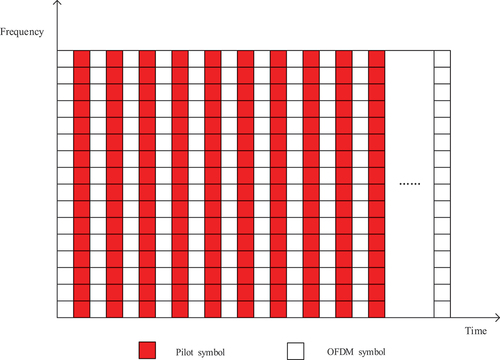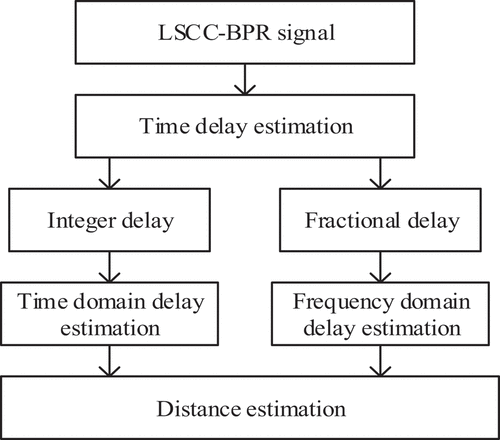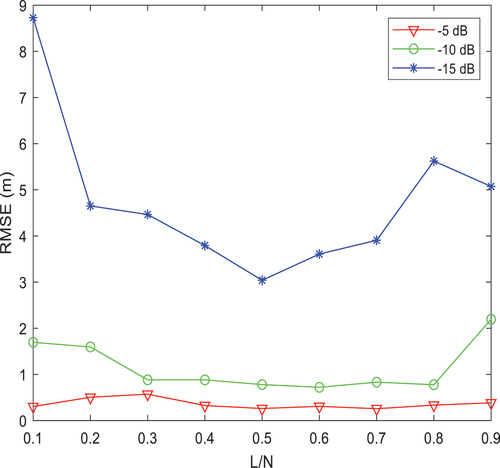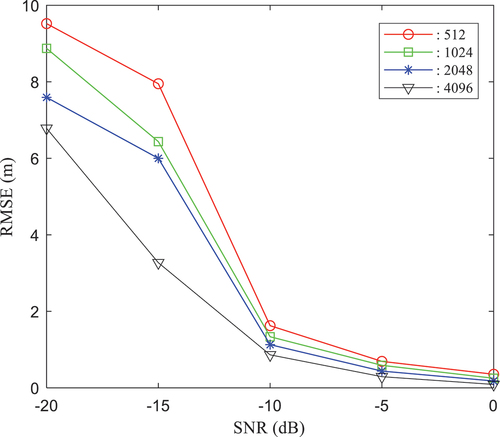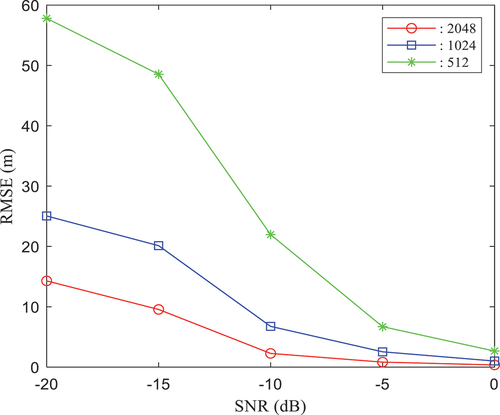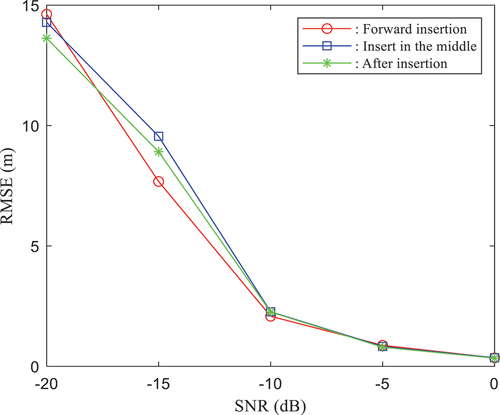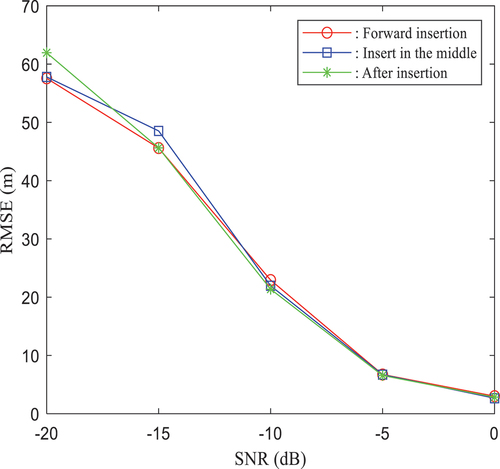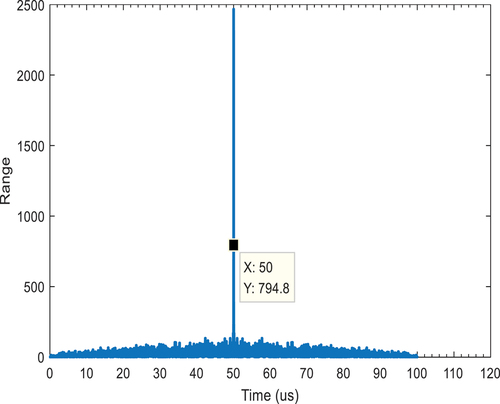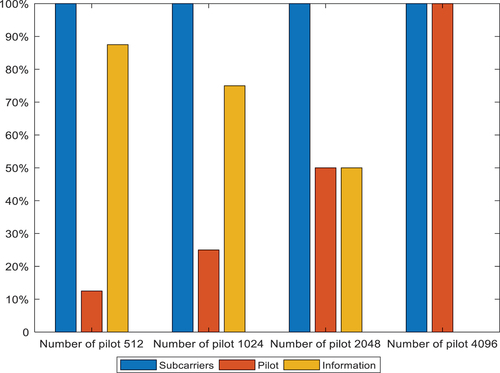Figures & data
Table 1. Iridium STL signal system.
Figure 4. Schematic diagram of the LSCC-BPR signal structure. (a) Partial insertion of a pilot in front of the subcarrier. (b) Partial insertion of a pilot in the middle of the subcarrier. (c) Partial insertion of a pilot behind the subcarrier.
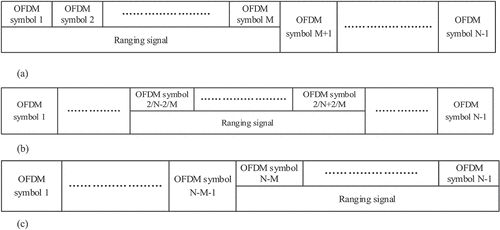
Figure 8. Time delay estimation based on fractional sampling. (a) When the number of carriers is 512. (b) When the number of carriers is 1024. (c) When the number of carriers is 2048. (d) When the number of carriers is 4096.
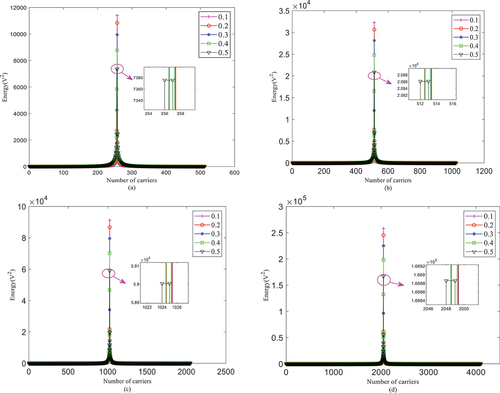
Figure 9. Simulation of time-domain delay estimation for different SNRs.(a) When the SNR is −5 dB. (b) When the SNR is −10 dB. (c) When the SNR is −15 dB. (d) When the SNR is −20 dB.
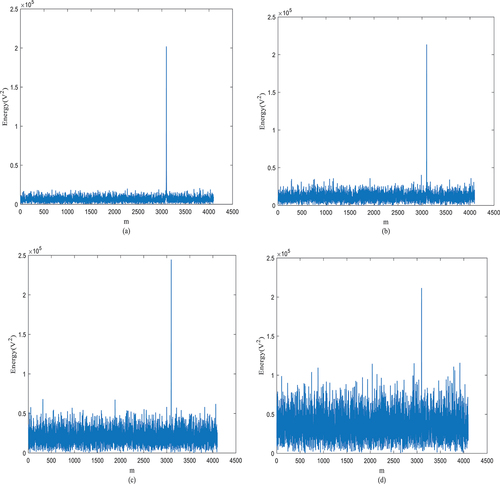
Figure 12. Relationship between ranging error and SNR when the ranging pilots are inserted in the front.
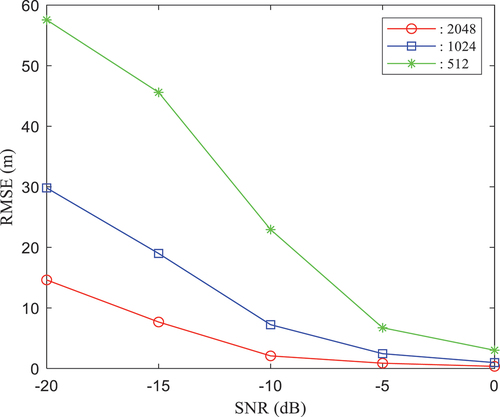
Figure 19. Ranging accuracy simulation based on the traditional OFDM signal and the LSCC-BPR signal.
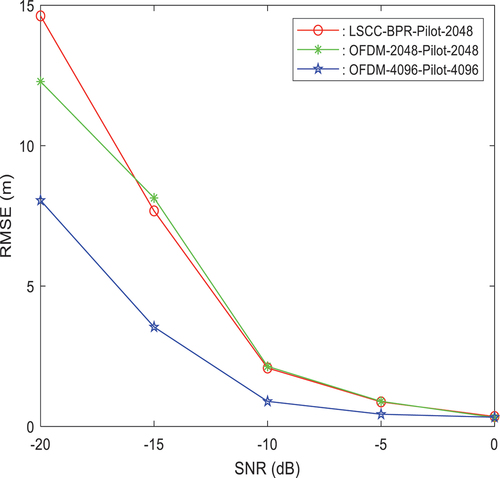
Table 2. Comparison of ranging performances of the CSS and LSCC-BPR signals.
Table 3. Ranging accuracy for different numbers of pilots at an SNR of 0 dB.
Data availability statement
The data that support the findings of this study are available from the corresponding author upon reasonable request.



